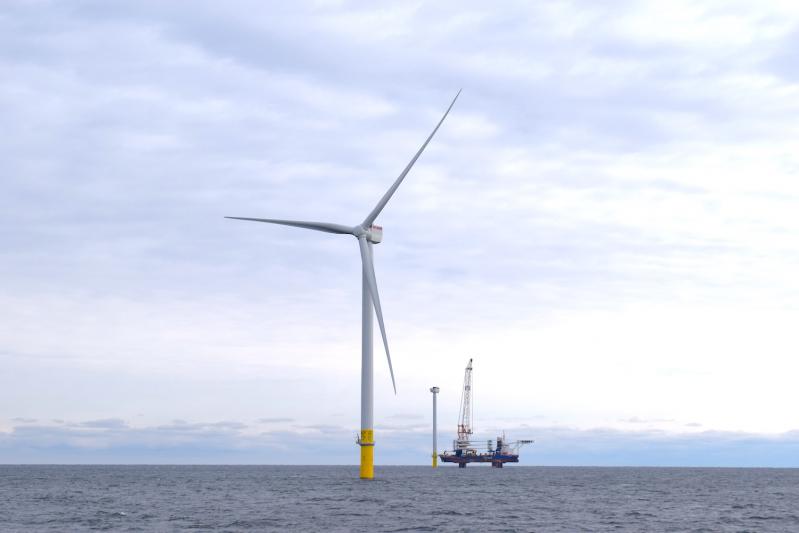Revolution Wind, a wind farm under construction in federal waters on the outer continental shelf, has sued the Trump administration following the federal Bureau of Ocean Energy Management’s August issuance of a stop-work order, with the 65-turbine installation already 80-percent complete.
The stop-work order was one of multiple actions apparently aimed at killing a nascent domestic offshore wind industry. In July, the federal Interior Department announced the end of what it called “preferential treatment for unreliable, subsidy-dependent wind and solar energy,” and in August launched investigations into bird deaths caused by wind farms. BOEM rescinded regulations outlining renewable energy lease sales early last month.
Orsted and Skyborn Renewables jointly own Revolution Wind, as they do the adjacent South Fork Wind farm, the 12-turbine installation that delivers renewable electricity to the South Fork via an export cable that makes landfall in Wainscott. To date, it is the nation’s only commercial-scale offshore wind farm in operation. Its completion and operation were celebrated in a March 2024 event at the Southampton campus of Stony Brook University that was attended by Gov. Kathy Hochul and then-Interior Secretary Deb Haaland.
Last Thursday, Orsted filed a complaint in the United States District Court for the District of Columbia challenging the stop-work order, to be followed by a request for a preliminary injunction.
The companies “will continue to seek to work collaboratively with the administration and other stakeholders toward a prompt resolution,” according to Orsted, but believe that BOEM did not have legal authority to issue the stop-work order, the stated basis of which the developer asserts was in violation of applicable law. “The project is facing substantial harm from continuation of the stop-work order, and as a result, litigation is a necessary step.”
The order issued by BOEM’s acting director ordering Orsted to halt all activities related to the Revolution Wind project cited “concerns that have arisen during the review” the Interior Department is undertaking. But, as the Danish energy company’s statement notes, federal and state reviews by agencies including the Department of Defense, Coast Guard, Army Corps of Engineers, and National Marine Fisheries Service began more than nine years ago. All required permits had been secured by 2023.
Revolution Wind, Orsted said, “supports job creation and is expected to enhance reliability as a critical part of the Northeast energy supply, which is crucial to meeting strong expected growth in energy demand.” This, the developer said, includes supporting the growing power needs of data centers and artificial intelligence, “with experts warning that halting the project will increase electricity costs for the region.” When operational, Revolution Wind is to power more than 350,000 residences in Connecticut and Rhode Island.
All of the installation’s offshore foundations have been installed, along with approximately 70 percent of its wind turbines. “Export cable installation is nearly complete, as is 90 percent of the onshore substation.” The project supports more than 2,000 jobs across construction, operations, shipbuilding, and manufacturing, the developer said, including more than 1,000 union jobs that have already contributed two million union work hours to the project. “Revolution Wind has spent and committed billions of dollars in reliance upon this fulsome review process.”




